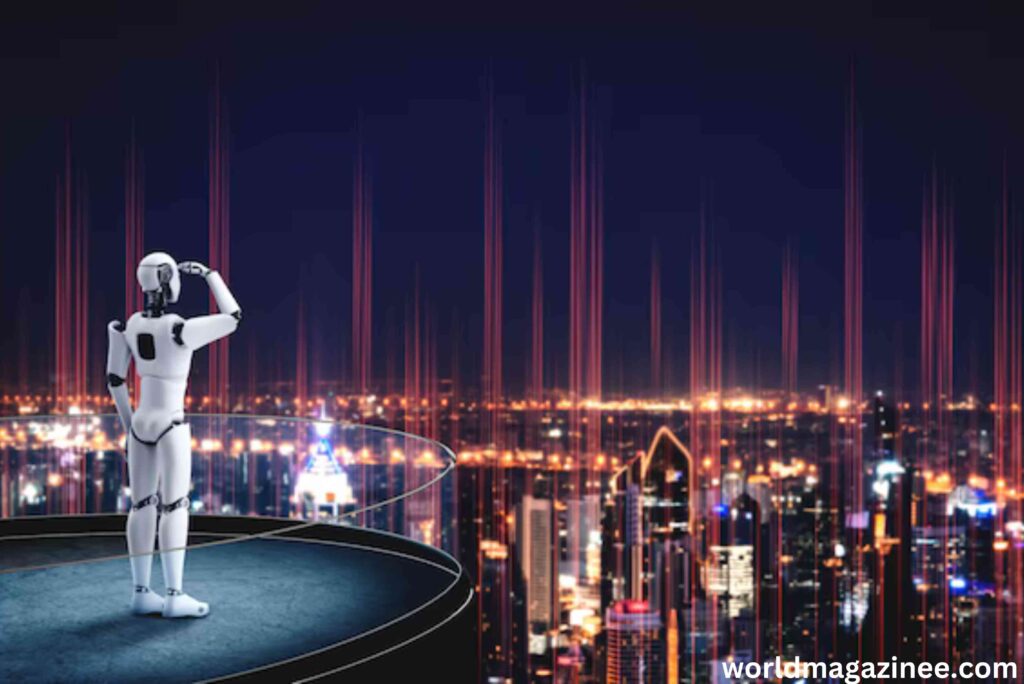In the ever-evolving landscape of technology, innovation never sleeps. Every now and then, a new product, code, or concept emerges that captures the imagination of industries and consumers alike. One such term that has recently sparked curiosity is WQR2548. Though shrouded in ambiguity, this alphanumeric sequence hints at something groundbreaking. Is it a cutting-edge gadget? A revolutionary industrial component? Or perhaps a code that unlocks new possibilities in artificial intelligence? In this deep dive, we’ll explore the potential of WQR2548, unpack its hypothetical applications, and envision how it could shape the future of technology.
What Is WQR2548? Decoding the Enigma
At first glance, WQR2548 appears to be a random combination of letters and numbers. However, in the context of technology and manufacturing, such codes often represent product models, proprietary software versions, or specialized components. For the sake of exploration, let’s define WQR2548 as a hypothetical advanced technology module designed to bridge gaps in efficiency, connectivity, and automation.
Imagine WQR2548 as a next-generation microchip, IoT (Internet of Things) device, or AI-driven sensor system. Its design could prioritize seamless integration across platforms, ultra-low latency, and energy efficiency. Alternatively, it might be a proprietary algorithm used in data analytics, robotics, or quantum computing. The possibilities are vast, but the core idea remains: WQR2548 symbolizes innovation at its peak.
Also Read Related Post: How to Make $1M with Luxury Cars: The Ultimate Guide
Key Features of WQR2548: What Sets It Apart
If WQR2548 were a real product, its features would likely push the boundaries of existing technology. Let’s speculate on its potential attributes:
- Hyper-Connectivity
WQR2548 could act as a universal connector, enabling devices from different ecosystems (e.g., smart homes, industrial machines, healthcare systems) to communicate effortlessly. Think of it as a “translator” that harmonizes data protocols like Bluetooth, Zigbee, and 5G. - AI-Powered Decision-Making
Embedded with machine learning capabilities, WQR2548 might analyze real-time data to optimize processes. For example, in a manufacturing plant, it could predict equipment failures or adjust supply chain workflows autonomously. - Energy Efficiency
Sustainability is a global priority. WQR2548 could integrate energy-harvesting technologies, such as solar or kinetic energy, to operate with minimal environmental impact. - Quantum Resistance
With cybersecurity threats on the rise, WQR2548 might employ quantum-resistant encryption to protect data from future hacking attempts. - Scalability
Designed for both small-scale and enterprise use, WQR2548 could adapt to diverse applications, from personal wearables to city-wide infrastructure projects.
Applications of WQR2548: Transforming Industries
The true value of any technology lies in its real-world applications. Here’s how WQR2548 could revolutionize key sectors:
1. Healthcare: Precision and Personalization
In healthcare, WQR2548 might power wearable devices that monitor patients’ vital signs with unprecedented accuracy. Paired with AI, it could detect early signs of diseases like diabetes or heart conditions and alert users and physicians proactively. In hospitals, WQR2548-enabled robots could assist in surgeries, reducing human error and improving outcomes.
2. Manufacturing: The Smart Factory Revolution
Factories adopting WQR2548 could achieve full automation. Sensors equipped with this technology might oversee production lines, predict machinery malfunctions, and even order replacement parts automatically. This reduces downtime and boosts productivity.
3. Agriculture: Sustainable Farming
Imagine smart tractors and drones using WQR2548 to analyze soil health, weather patterns, and crop growth. Farmers could receive actionable insights to optimize irrigation, reduce pesticide use, and increase yields—critical for feeding a growing global population.
4. Transportation: Safer and Smarter Mobility
In autonomous vehicles, WQR2548 could enhance decision-making algorithms, allowing cars to navigate complex traffic scenarios safely. For logistics, it might streamline route planning, reducing fuel consumption and delivery times.
5. Energy: Grids of the Future
Power grids integrated with WQR2548 could balance supply and demand in real time, incorporating renewable energy sources like wind and solar more effectively. This would minimize waste and support global decarbonization goals.
Also Read Related Post: afprl 23800, asian 22500, and educ 25000
The Benefits of Adopting WQR2548

Why should industries care about this enigmatic technology? Let’s break down its advantages:
- Cost Savings: By automating processes and predicting failures, WQR2548 could save companies millions in operational expenses.
- Enhanced Security: Quantum-resistant features would future-proof sensitive data against emerging threats.
- Sustainability: Energy-efficient designs align with global net-zero targets, appealing to eco-conscious consumers and regulators.
- Competitive Edge: Early adopters of WQR2548 would lead their industries in innovation, attracting investors and customers.
Challenges and Considerations
No technology is without hurdles. For WQR2548 to succeed, several challenges must be addressed:
- Interoperability: Ensuring compatibility with legacy systems could be complex.
- Regulatory Compliance: New technologies often face scrutiny from governments, especially in sectors like healthcare and energy.
- Ethical Concerns: AI-driven systems raise questions about data privacy and job displacement. Transparent governance frameworks would be essential.
- Cost of Adoption: Small businesses might struggle with upfront investment, necessitating scalable pricing models.
Also Read Related Post: Is the Body Weight Scale at Whole Foods Ponce the Secret to Your Health Goals
The Future of WQR2548: What Lies Ahead?
If WQR2548 follows the trajectory of innovations like 5G or blockchain, its impact will be profound. Here’s what the future might hold:
- Global Standardization: WQR2548 could become a benchmark for connectivity, much like USB or Wi-Fi.
- Consumer Adoption: As costs decrease, everyday gadgets—from refrigerators to fitness trackers—might embed WQR2548.
- Collaborative Ecosystems: Competitors could collaborate to create open-source versions, accelerating innovation.
- New Career Opportunities: Demand for WQR2548 specialists in engineering, cybersecurity, and data science could skyrocket.
Frequently Asked Questions (FAQ)
Q: Is WQR2548 a real product?
A: As of now, WQR2548 appears to be a hypothetical concept. However, its speculated features align with ongoing advancements in IoT, AI, and quantum computing.
Q: How soon could WQR2548 become mainstream?
A: If development accelerates, we might see prototypes within 5–10 years, depending on R&D investments and industry collaboration.
Q: Will WQR2548 replace existing technologies?
A: Likely not. Instead, it would complement and enhance current systems, driving incremental innovation.
Q: What industries would benefit most from WQR2548?
A: Healthcare, manufacturing, energy, and transportation are prime candidates due to their reliance on automation and data.
Conclusion: Embracing the Unknown
While WQR2548 remains a mystery today, its conceptual framework offers a glimpse into the future of technology. By prioritizing connectivity, intelligence, and sustainability, it embodies the principles that will define the next era of innovation. For businesses and individuals alike, staying informed and adaptable will be key to harnessing its potential.
The journey from obscurity to ubiquity is rarely linear, but with curiosity and collaboration, WQR2548—or whatever comes next—could very well change the world.








